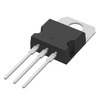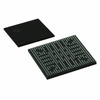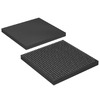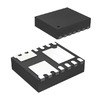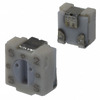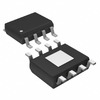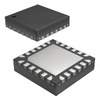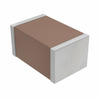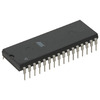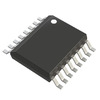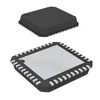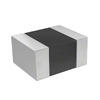Exploring the 88E1512 Transceiver: Datasheet Overview, Pinout Guide, and Alternatives
The Marvell Alaska 88E1512 Gigabit Ethernet transceiver stands as a required solution for modern networking, supporting seamless data transfer across a broad range of applications. Renowned for its robust design and energy efficiency, the 88E1512 is a key player in industries demanding high-speed, reliable connectivity. From data centers to consumer electronics, its architecture provides flexibility and integration ease, allowing for optimal performance across varied technological environments. With support for both copper and fiber connections, along with features like low power consumption and compatibility with advanced semiconductor components, the 88E1512 positions itself as a forward-thinking choice for you aiming to future-proof their network systems while managing costs efficiently.Catalog
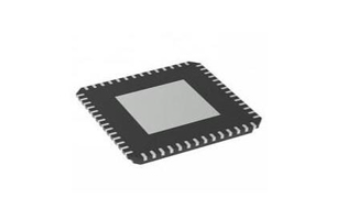
Pin Configuration of 88E1512

88E1512 CAD Design
Symbol Representation

Footprint Design
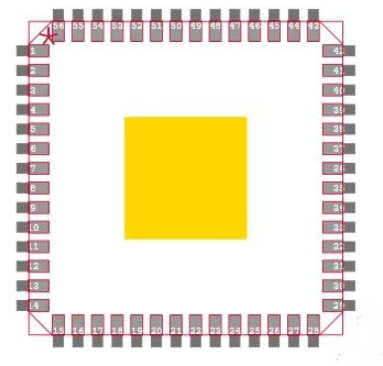
3D Model Integration

Overview of 88E1512 Ethernet Transceiver
The 88E1512 is a highly adaptable Gigabit Ethernet transceiver. It supports the widely utilized 1000BASE-T, 100BASE-TX, and 10BASE-T standards, ensuring efficient data transmission. This diversity in standards allows it to fulfill the demands of modern network systems, offering reliability across different interfaces.
With connections available through both GMII and RGMII interfaces, the transceiver facilitates smooth integration into various network infrastructures. This dual compatibility caters to diverse network architectures, providing you with the flexibility needed to enhance system performance seamlessly. The ease of incorporation into existing systems is often valued, boosting both scalability and efficiency. Supporting Copper, Fiber, and SGMII formats, the 88E1512 is prepared to adapt to a range of network scenarios. In environments where network demands fluctuate, this capability can be mostly advantageous. The transceiver's automatic media type detection reduces setup complexity, streamlining network management.
Integrated MDI termination resistors are part of the 88E1512's efficient design, simplifying circuit layouts and lowering costs related to materials and manufacturing. This thoughtful design aligns with IEEE standards, ensuring consistent performance. Such efficiency aids in delivering systems that are reliable yet straightforward to deploy. The balance of precision and cost management offered by the 88E1512 is frequently sought. By delivering quality solutions that respect budget constraints, projects can achieve both sustainability and scalability. This equilibrium is commonly observed in successful implementations, driving long-term network advancement.
Features
|
Feature |
Description |
|
IEEE Compliance |
10/100/1000BASE-T IEEE 802.3 compliant |
|
Multiple Operating Modes |
- RGMII to Copper |
|
- SGMII to Copper (88E1512/88E1514 only) |
|
|
- RGMII to Fiber/SGMII (88E1512 only) |
|
|
- RGMII to Copper/Fiber/SGMII with Auto-Media Detect
(88E1512 only) |
|
|
- Copper to Fiber (1000BASE-X) (88E1512/88E1514) |
|
|
RGMII Timing Modes |
Four RGMII timing modes with integrated delays,
eliminating the need for PCB trace delays |
|
Fiber Interface Support |
Supports 1000BASE-X and 100BASE-FX with SGMII (88E1512
only) |
|
RGMII LVCMOS Standards |
Supports LVCMOS/0 on the RGMII |
|
Energy Efficient Ethernet (EEE) |
IEEE 802.3az-2010 compliant, with EEE buffering for
legacy MACs |
|
Power Efficiency |
Ultra-Low Power, with integrated MDI termination
resistors |
|
Voltage Regulators |
Integrated Switching Voltage Regulators |
|
Green Ethernet Support |
- Active Power Save Mode |
|
- Energy Detect and Energy Detect+ low power modes |
|
|
IEEE1588 v2 |
Time Stamping support |
|
Synchronous Ethernet (SyncE) |
Clock Recovery |
|
Loopback Modes |
Three diagnostic loopback modes |
|
Downshift Mode |
Support for two-pair cable installations |
|
Adaptive Equalizers |
Fully integrated digital adaptive equalizers, echo
cancellers, and crosstalk cancellers |
|
Baseline Wander Correction |
Advanced digital baseline wander correction |
|
MDI/MDIX |
Automatic MDI/MDIX crossover at all speeds |
|
Polarity Correction |
Automatic polarity correction |
|
Auto-Negotiation |
IEEE 802.3 compliant |
|
LED Modes |
Software programmable LED modes, including LED testing |
|
Management Interface |
MDC/XMDIO Management Interface |
|
Diagnostic Tools |
CRC checker, packet counter, packet generation |
|
Wake on LAN (WOL) |
Event detection capability |
|
Virtual Cable Tester (VCT) |
Advanced Virtual Cable Tester for diagnostics |
|
Auto-Calibration |
For MAC Interface outputs |
|
Temperature Sensor |
Integrated |
|
Voltage Supply |
Single 3.3V supply with internal switching regulator
support |
|
I/O Voltage Options |
1.8V, 2.5V, or 3.3V for I/O pads |
|
Grade Options |
Commercial and Industrial grades (88E1510 and 88E1512
only) |
|
Package |
- 48-Pin QFN 7mm x 7mm Green with EPAD (88E1510 and
88E1518) |
|
- 56-Pin QFN 8mm x 8mm Green with EPAD (88E1512/88E1514) |
Applications
The 88E1512 Ethernet PHY offers a flexible foundation for swift advancements in digital landscapes. This component powers gigabit systems across various sectors, such as enterprise, embedded solutions, consumer electronics, and metro/service networks.
Enterprise Applications
• Enhancing Network Infrastructure: In enterprise networks, the 88E1512 amplifies connectivity and boosts data transfer rates. It thrives in environments demanding rapid and seamless data exchange, like data centers and corporate networks.
• Data Center Integration: Data centers benefit from the 88E1512's stable performance and high-speed capabilities, ensuring smooth data flow necessary for storage and processing. It strikes a harmonious balance between speed and reliability, becoming a key element in contemporary data center designs.
Embedded Systems
In embedded systems, the component enables compact and efficient layouts serious for IoT and automation. This integration fosters smarter and more responsive applications, driving innovations in smart home technologies and industrial automation.
Consumer Electronics
The 88E1512 meets the rising demand for high-speed internet in consumer devices. Smart TVs and gaming consoles, for example, leverage their capacity for superior streaming and gaming experiences, enhancing your satisfaction and competitive edge.
Metro and Service Provider Networks
• Maintaining Connectivity: In metro networks and among service providers, the 88E1512 ensures stable and consistent connections. Its deployment enables service providers to deliver quality internet access with minimal interruptions, benefiting both businesses and homes.
• Enhancing Network Backbone: Its role in metro networks supports reliable infrastructure, facilitating efficient communication channels and accommodating high data loads. It is main in sustaining urban communication networks, ensuring their efficiency and resilience.
Alternative
• 88E1512-A0--NNP2I000
• 88E1512-A0-NNP-2I000
• 88E1512-A0NNP2I000
• 88E1512A0NNP2I000
Block Diagram

Package
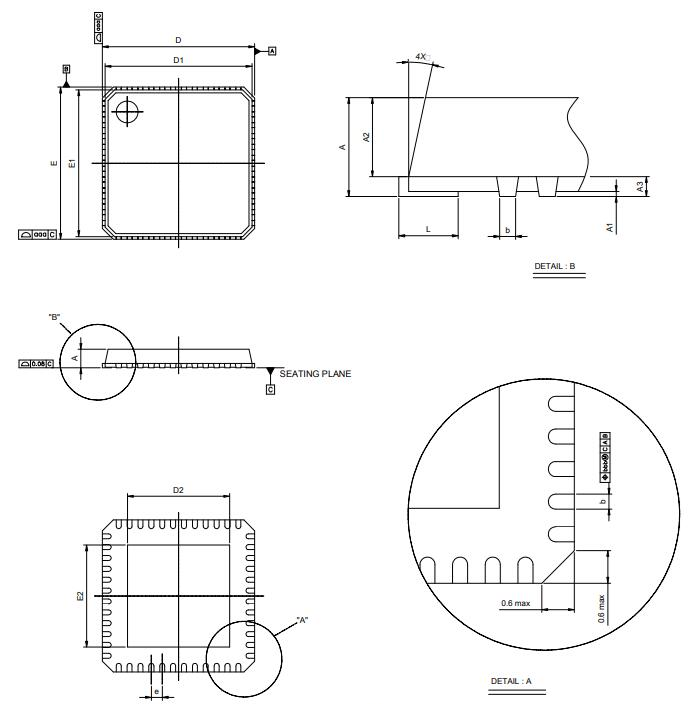
Insights from Manufacturers
Marvell, known for pushing the envelope in digital storage, consistently breaks new ground across various sectors. Their advanced semiconductor solutions play a major role in defining the future of data storage and have far-reaching effects on enterprise, cloud, automotive, industrial, and consumer markets. This holistic strategy reveals their dedication to boosting data management efficiency and scalability.
In both enterprise and cloud settings, Marvell enhances data flow and storage efficiency. The growing emphasis on cloud computing calls for robust, scalable innovations. By leveraging advanced algorithms alongside power-efficient designs, Marvell tackles latency challenges, providing seamless data access to meet the speed requirements required for modern businesses. For automotive and industrial uses, Marvell delivers durable solutions designed to endure tough conditions. Their semiconductors offer reliable, data processing—active for smart vehicles' evolution and manufacturing automation. Incorporating AI capabilities supports intelligent decision-making and predictive maintenance, both used for these sectors' transformations.
Technical Specification
Here's the table for the Marvell Semiconductor, Inc. 88E1512-A0-NNP2I000 technical specifications and attributes.
|
Type |
Parameter |
|
Factory Lead Time |
16 Weeks |
|
Mount |
Surface Mount |
|
Mounting Type |
Surface Mount |
|
Package / Case |
56-VFQFN Exposed Pad |
|
Usage Level |
Industrial grade |
|
Operating Temperature |
-40°C ~ 85°C (TA) |
|
Series |
Alaska® |
|
Published |
2011 |
|
Part Status |
Active |
|
Moisture Sensitivity Level (MSL) |
3 (168 Hours) |
|
Number of Terminations |
56 |
|
Type |
Transceiver |
|
Voltage - Supply |
1.71V ~ 1.89V, 2.38V ~ 2.62V, 3.14V ~ 3.46V |
|
Terminal Position |
QUAD |
|
Terminal Form |
NO LEAD |
|
Number of Functions |
1 |
|
Supply Voltage |
3.3V |
|
JESD-30 Code |
S-XQCC-N56 |
|
Number of Channels |
4 |
|
Interface |
Ethernet |
|
Data Rate |
10Mbps, 100Mbps, 1Gbps |
|
Protocol |
IEEE 802.3, IEEE 1588 |
|
Number of Drivers/Receivers |
4-Apr |
|
Duplex |
Full, Half |
|
Number of Transceivers |
1 |
|
Simplex/Duplex |
Duplex |
|
Max Junction Temperature (Tj) |
125°C |
|
Ambient Temperature Range High |
85°C |
|
Height |
1mm |
|
RoHS Status |
RoHS Compliant |
Datasheet PDF
88E1512-A0-NNP2I000 Datasheets:
Frequently Asked Questions [FAQ]
1. How does 88E1512 operate?
The 88E1512 transceiver is designed for versatile network setups, supporting five operation modes to suit specific needs. RGMII which enhances digital communication between MAC and PHY, streamlining data transmission and reducing design complexity, is ideal for copper connections in various installations. SGMII is a compact protocol with differential pairs for high signal integrity and low pin count, supporting copper and fiber connections, widely used for its low power and adaptability. RGMII to SGMII Transition offers flexible connectivity by enabling RGMII-to-SGMII transitions with configuration options to ensure compatibility across different setups. Copper and Fiber Support SGMII support both copper (durable, cost-effective) and fiber (high-speed, long-distance) connections, with auto-detection for simplified setup. Fiber Transition (1000BASE-X) facilitates seamless transitions between copper and fiber modes, adaptable to residential and commercial environments based on latency and signal requirements.
2. What is the operating condition of the 88E1512?
The transceiver features an integrated voltage regulator, operating smoothly on a 3.3V power supply while supporting multiple LVCMOS voltages: 1.8V, 2.5V, and 3.3V. This adaptability allows seamless integration into systems with different power frameworks. An intentional choice of voltage standards directly influences thermal management and power efficiency, playing a notable role in engineering challenges. By attending to these aspects, you can bolster performance longevity and sustainable device operation.
3. What package is 88E1512 available?
Encased in a compact 56-pin QFN package, the transceiver dimensions are 8mm x 8mm. This design is used for maximizing space on dense circuit boards, making it suitable for high-density applications. As electronics continue trending towards smaller sizes, choosing compact components without losing functionality becomes increasingly important. The QFN package not only improves thermal performance but also reduces the footprint, impacting product versatility and market responsiveness directly.
About us
ALLELCO LIMITED
Read more
Quick inquiry
Please send an inquiry, we will respond immediately.
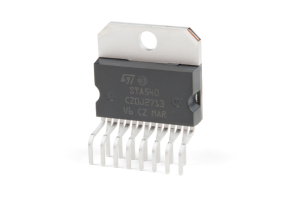
STA540 Power Amplifier Guide: Specs, Pin Configuration, and Equivalent Options
on October 29th
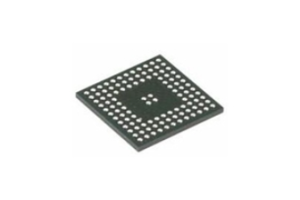
CSR8675 Premium Single-Chip: Comprehensive Datasheet, Key Features, and Specifications
on October 29th
Popular Posts
-

What is GND in the circuit?
on January 1th 2933
-

RJ-45 Connector Guide: RJ-45 Connector Color Codes, Wiring Schemes, R-J45 Applications, RJ-45 Datasheets
on January 1th 2486
-

Fiber Connector Types: SC Vs LC And LC Vs MTP
on January 1th 2079
-

Understanding Power Supply Voltages in Electronics VCC, VDD, VEE, VSS, and GND
on November 8th 1872
-

Comparison Between DB9 and RS232
on January 1th 1759
-

What Is An LR44 Battery?
Electricity, that ubiquitous force, quietly permeates every aspect of our daily lives, from trivial gadgets to life-threatening medical equipment, it plays a silent role. However, truly grasping this energy, especially how to store and efficiently output it, is no easy task. It is against this background that this article will focus on a type of coin cell battery that may seem insignificant on the...on January 1th 1709
-

Understanding the Fundamentals:Inductance Resistance, andCapacitance
In the intricate dance of electrical engineering, a trio of fundamental elements takes center stage: inductance, resistance, and capacitance. Each bears unique traits that dictate the dynamic rhythms of electronic circuits. Here, we embark on a journey to decipher the complexities of these components, to uncover their distinct roles and practical uses within the vast electrical orchestra. Inductan...on January 1th 1649
-

CR2430 Battery Comprehensive Guide: Specifications, Applications and Comparison to CR2032 Batteries
What is CR2430 battery ?Benefits of CR2430 BatteriesNormCR2430 Battery ApplicationsCR2430 EquivalentCR2430 VS CR2032Battery CR2430 SizeWhat to look for when buying the CR2430 and equivalentsData Sheet PDFFrequently Asked Questions Batteries are the heart of small electronic devices. Among the many types available, coin cells play a crucial role, commonly found in calculators, remote controls, and ...on January 1th 1537
-

What Is RF and Why Do We Use It?
Radio Frequency (RF) technology is a key part of modern wireless communication, enabling data transmission over long distances without physical connections. This article delves into the basics of RF, explaining how electromagnetic radiation (EMR) makes RF communication possible. We will explore the principles of EMR, the creation and control of RF signals, and their wide-ranging uses. The article ...on January 1th 1532
-

CR2450 vs CR2032: Can The Battery Be Used Instead?
Lithium manganese batteries do have some similarities with other lithium batteries. High energy density and long service life are the characteristics they have in common. This kind of battery has won the trust and favor of many consumers because of its unique safety. Expensive tech gadgets? Small appliances in our homes? Look around and you'll see them everywhere. Among these many lithium-manganes...on January 1th 1500





